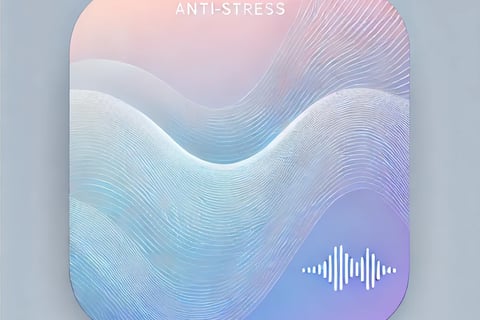How do different learning styles affect student stress levels?
"Discover how your unique learning style shapes your educational journey! Unravel the mysteries of stress and engagement in the classroom—are you a visual learner lost in a sea of words, or a kinesthetic thinker confined to a desk? Join us as we explore the surprising connections between learning preferences and student stress levels."
STUDENT STRESS
10/28/20245 min read
In today’s educational landscape, students have unique ways of processing information that reflect their individual learning preferences. These varied learning styles, including visual, auditory, and kinesthetic, significantly influence how students engage with material, grasp concepts, and react to their learning environment. When teaching methods align with a student's preferred learning style, it can lead to improved understanding and increased engagement, ultimately reducing stress levels. Conversely, when there is a mismatch between instructional approaches and a student’s learning style, it can result in frustration, decreased motivation, and heightened stress.
To address these challenges, educators can implement strategies that cater to diverse learning styles. This aligns well with topics which deal with coping with academic pressure and tips for stress management where students can learn practical ways to manage stress effectively. Additionally, strategies for balancing study and social life are crucial, as maintaining a healthy balance can alleviate the pressure students face. Understanding the impact of stress on student mental health and strategies for prevention can further empower students to seek help and use resources effectively. Lastly, exploring how to beat exam anxiety with practical techniques for staying calm can provide essential tools for students facing high-pressure situations.
Understanding How Different Learning Styles Affect Student Stress Levels
Understanding how different learning styles affect student stress levels is critical in creating a productive and low-stress educational environment. When students’ learning preferences are understood and supported, they feel more confident and motivated.
Conversely, when they’re forced into a learning style that doesn’t resonate with them, it can lead to stress, anxiety, and disengagement. Each learning style faces unique challenges, but with the right approaches, educators can make learning more inclusive and help students thrive.
Visual Learners: Coping with Limited Visual Aids
Visual learners, who rely on images, charts, and diagrams to understand information, may experience stress in settings that heavily favor auditory or text-based instruction. A lack of visual aids can make it difficult for them to follow along, leading to frustration and anxiety, as they struggle to retain and interpret information without visual support.
Studies show that approximately 55% of visual learners report higher stress levels in classrooms with minimal visual resources. To mitigate this stress, visual learners can benefit from creating their own visual tools, like color-coded notes, flashcards, or mind maps.
Educators can help reduce stress for these students by integrating visual components into lessons, using slides, diagrams, or videos that break down complex information. By doing so, teachers not only support visual learners but also create a more engaging environment for students of all learning styles.
Auditory Learners: Need for Verbal Interaction and Feedback
Auditory learners understand best through spoken explanations and discussions. When lessons lack verbal elements, auditory learners may struggle to grasp concepts, feeling disconnected and stressed in environments that focus on visual or written materials. According to research, 57% of auditory learners experience elevated stress when they cannot engage with auditory resources.
These learners can benefit from techniques such as recording lectures to revisit later, joining study groups for verbal discussion, or repeating information aloud. Educators can support auditory learners by incorporating interactive Q&A sessions, discussions, or podcasts to complement visual or text-based instruction. This approach not only reduces stress but also promotes a collaborative, communicative learning environment.
Solitary Learners: Strain in Collaborative Environments
Solitary or intrapersonal learners prefer to process information alone and may struggle with stress in group-centered or collaborative settings. These students excel in independent study, often feeling more focused and productive when working alone.
However, mandatory group projects and social participation can cause anxiety, as over half (51%) of solitary learners report stress in collaborative environments. Solitary learners benefit from having structured, quiet time set aside for individual work, allowing them to absorb information independently.
Educators can support these learners by offering alternative assignments that allow for solo work or by giving them defined roles within groups, minimizing the pressure to constantly engage socially. In doing so, educators help solitary learners contribute meaningfully while reducing stress associated with social expectations.
Social Learners: Seeking Interaction, Facing Challenges in Competitive Settings
Social learners thrive on interaction and collaboration, often benefiting from group discussions, teamwork, and peer learning. However, they can feel isolated or stressed in competitive or highly individualistic environments where cooperation is limited.
Research indicates that around 26% of social learners report stress when they are unable to engage with peers or face competition rather than collaboration. These learners can manage stress by seeking opportunities for interaction, such as joining study groups, finding mentors, or involving themselves in team-oriented extracurricular activities.
Schools can further support social learners by incorporating group projects and emphasizing cooperative learning. By fostering a collaborative atmosphere, educational institutions can help social learners feel connected and reduce stress stemming from isolation.
Kinesthetic Learners: Coping with Sedentary Learning Environments
Kinesthetic learners, who learn best through hands-on activities and movement, often face stress in traditional classroom settings that require prolonged periods of sitting and listening.
Approximately 40% of kinesthetic learners report elevated stress in static, lecture-based environments. Their need for physical engagement can make traditional learning environments feel restrictive and frustrating. Kinesthetic learners can alleviate stress by incorporating movement into their study routines, such as pacing while reviewing notes or using hands-on study tools.
Educators can support these learners by incorporating activities that require physical engagement, such as lab experiments, role-playing, or field trips. Acknowledging their need for movement enables kinesthetic learners to feel more comfortable and reduces stress related to inactivity.
Logical Learners: Pressure in Conceptual Environments
Logical learners thrive in structured environments that emphasize problem-solving and logical reasoning. They may experience stress in subjects that lack clear, analytical frameworks or structured approaches, such as abstract or conceptual topics.
Logical learners benefit from classes that offer practical, real-world applications and exercises that reinforce structured thinking. For these learners, educators can incorporate activities that involve sequential or rule-based thinking, like experiments or case studies, that allow them to analyze and solve problems.
This reduces stress by aligning the learning environment with their natural inclination for logic and structure. Schools that embrace problem-solving activities offer logical learners clarity, helping them feel more secure and focused in their studies.
Blending Teaching Styles for Inclusive Learning
To effectively support diverse learning styles and reduce stress for all students, educators can adopt a multimodal instructional approach that integrates various teaching methods. By blending visual, auditory, and kinesthetic activities, teachers create an environment that caters to each learning preference, reducing stress and boosting engagement across the board.
For example, a science lesson could include a short lecture, an interactive group activity, and a hands-on experiment. This approach not only caters to different learning styles but also fosters a more inclusive, engaging classroom atmosphere.
When students are empowered to understand their learning preferences and adopt personalized study techniques, they experience greater confidence, reduced stress, and improved academic performance. Schools that prioritize learning-style inclusivity ultimately contribute to healthier, happier learning experiences for their students.
Conclusion
Understanding how different learning styles affect student stress levels is crucial for educators aiming to create supportive and inclusive classrooms. By acknowledging diverse learning preferences and adapting instructional methods, teachers can enhance learning, reduce student anxiety, and foster a more positive educational environment.
An education system that honors each learning style empowers students, builds resilience, and promotes mental well-being, creating a foundation for academic and personal success.


